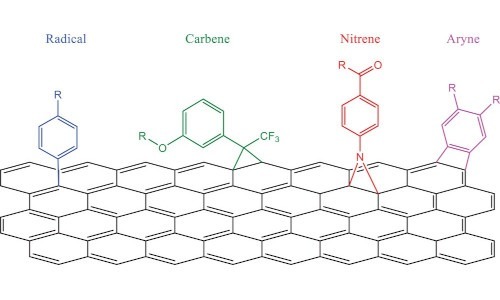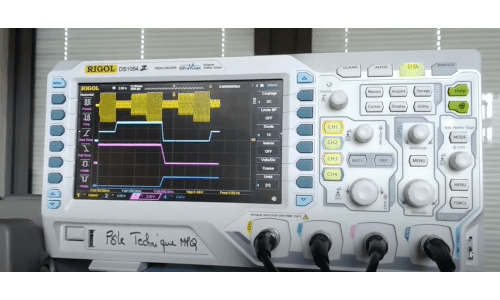In their recent work in the field of spin electronics, spintronics, led by Dr. Pascal Martin and Dr. Clément Barraud, research teams from the Interfaces Traitements Organisation et DYnamique des Systèmes (ITODYS) and Matériaux et Phénomènes Quantiques (MPQ) laboratories, have created new heterostructures and uncovered the mechanisms by which they allow the encoding of information that will then be transported through spin circuits. Their results were published on August 22, 2022 in Nanoscale.

Génération et distribution de l’information dans un circuit électronique
Spintronics is a quantum technology born in the late 1980s. It includes the exploration of new materials and physical phenomena using not only the electric charge of electrons to transmit information, but also their spin, an intrinsic property of electrons which is a quantum quantity without equivalent at our scale. This property, at the origin of magnetism, can be described by comparing the electron to a small magnet which is oriented upwards or downwards, which makes it possible to code information in a binary way, in a form known to the general public: codes composed of 0 (low spin) and 1 (high spin). This coding is already widely used in hard disks and other random access memories (MRAM).
In their previous work, the researchers were interested in the transport of spin quantum information. Now they are working on the upstream step, which is the electrical generation of the spin information. It is this degree of freedom that constitutes the spin of an electron that particularly interests Dr. Clément Barraud (MPQ laboratory) and Dr. Pascal Martin (ITODYS laboratory) who have sought to understand how the information is generated and how it is possible to intervene on this stage.
The interest of these research teams for spintronics is therefore to study the quantum phenomenon at the origin of the coding of information. For future electronic circuits, the codes made of “0” and “1” that we know are in fact only the result of a “filtering” of the spins operated by spintronic devices.
This work, carried out jointly by the research teams of the ITODYS and MPQ laboratories of Université Paris Cité, but also at the CNRS/Thales Unit in Palaiseau and at Trinity College in Dublin, has brought together multidisciplinary skills, since it has required the collaboration of chemists and physicists to compose and assemble the materials, as well as specialists in theoretical calculation and physical measurements.
One of the key materials chosen here is graphene, a monoatomic sheet of carbon (1 atom thick) whose crystallographic structure, known as honeycomb, has novel electronic properties already used for certain touch screen and transistor prototypes… But the researchers were not satisfied with these intrinsic properties which ensure the speed of movement of electrons in this structure and thus the speed of the processors, they also used it for the important possibilities that it offers to the realization of manipulations of surface chemistry. Thus, graphene constitutes a substrate of choice on which it is possible to attach organic or organometallic molecules that give it new properties, including the one that is at the heart of the recently published work: the ability to efficiently filter spins and to generate and electrically control the code of an information. Indeed, if classical electronics let indifferently high and low spins pass, spintronic devices allow, by playing on the materials composing them, here the molecules attached to the graphene, to sort them to let pass mainly high spins or low spins according to the voltage applied to the terminals of the device. Thus, by playing on the voltage applied to the devices they have created, researchers are now able to electrically generate information on a quantum medium that can be transported and stored.
Link to the news article on the Université Paris Cité website
Contact:
Clément Barraud (clement.barraud@u-paris.fr)
Reference:
Combined spin filtering actions in hybrid magnetic junctions based on organic chains covalently attached to graphene, P. Martin, B. Dlubak, R. Mattana, P. Seneor, M-B. Martin, T. Henner, F. Godel, A. Sander, S. Collin, L. Chen, S. Suffit, F. Mallet P. Lafarge, ML. Della Rocca, A. Droghetti, C. Barraud,
Nanoscale 14, 12692 (2022)
À lire aussi

On-Chip Ferromagnetic Resonance for van der Waals Heterostructures: Anisotropy and Damping of Cobalt Interfaced with Exfoliated 2D Materials
A collaboration between the technical hub, the clean room platform and the TELEM group at MPQ laboratory has developped a new experiment demonstrating that standard broadband ferromagnetic resonance can still be effective to probe the magnetization dynamics of “thin...

Pint of Science
Several of our researchers are participating in the Pint of Science festival, which is celebrating its 10th anniversary this year. It is one of the largest science festivals in the world. Until May 24th, researchers and the general public come together over a drink in...

Hybrid heterostructures for spintronics
Spintronics is a quantum technology that aims to add the quantum spin degree of freedom to conventional CMOS electronics. Since the discovery of giant magnetoresistance in 1988 by Albert Fert and Peter Grünberg, considered the birth of this field, spintronics has...

The MONTANA project of the Technical Department.
Batiste Janvier (Head of Technical Department) has created a video presenting the impressive MONTANA project of the Technical Department for Clément Barraud's experiment in the TELEM team. À lire aussi
